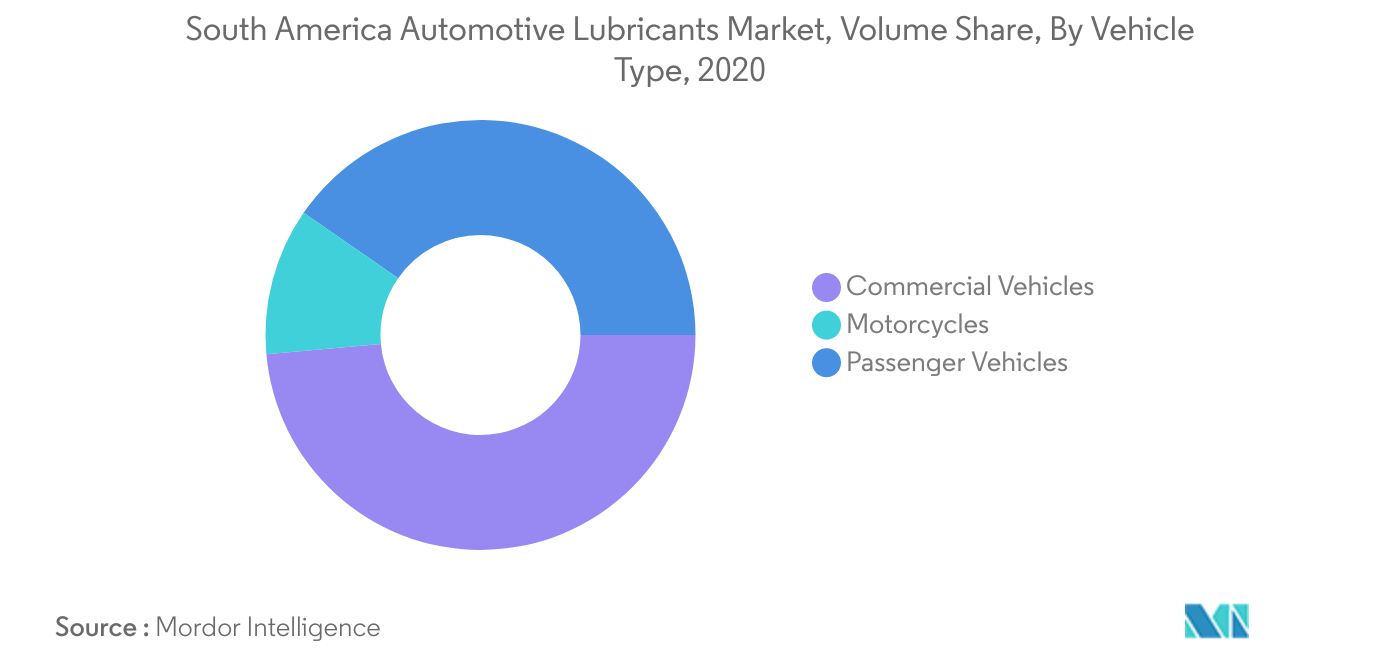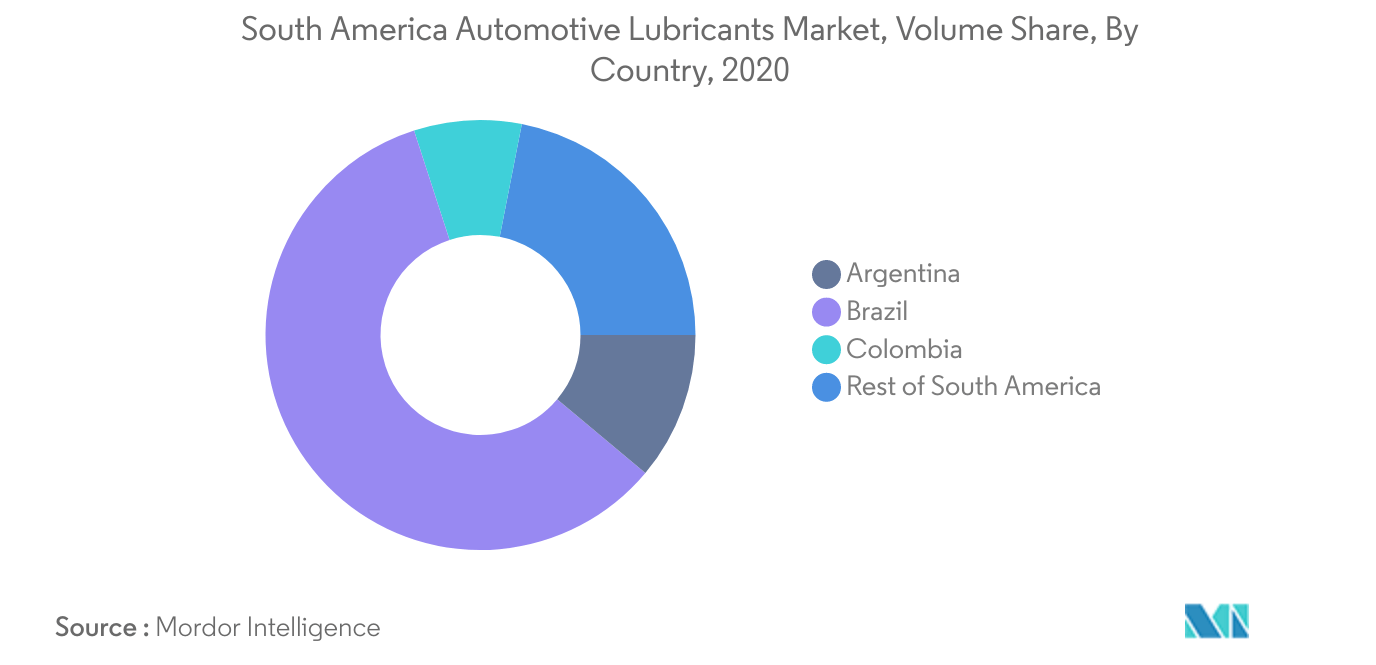Market Trends of South America Automotive Lubricants Industry
This section covers the major market trends shaping the South America Automotive Lubricants Market according to our research experts:
Largest Segment By Vehicle Type : <span style="font-family: 'regular_bold';color:#0e7db3;">Commercial Vehicles</span>
- In South America, passenger vehicles (PV) accounted for the largest share of 52.42% in the total number of on-road vehicles in 2020, followed by motorcycles (MC) and commercial vehicles (CV), with shares of 24.2% and 31.53%, respectively.
- In the South American region, the commercial vehicle (CV) segment accounted for almost 45.9% share in the total number of on-road vehicles during 2020, followed by passenger vehicles (PV) and motorcycles (MC) with 42.6% and 11.4% shares, respectively. During the same year, travel restrictions to curb the COVID-19 outbreak significantly affected the usage of these vehicles and their lubricant consumption.
- During 2021-2026, the motorcycle segment is expected to witness the highest CAGR of 5.52%. The recovery of motorcycle sales combined with the easing down of COVID-19-related travel restrictions are likely to be the key factors driving this trend.

Largest Country : <span style="font-family: 'regular_bold';color:#0e7db3;">Brazil</span>
- In the South American region, automotive lubricant consumption is the highest in Brazil, followed by Argentina and Colombia. In 2020, Brazil accounted for about 60% of the total automotive lubricant consumption in the region, whereas Argentina and Colombia accounted for shares of around 11.14% and 6.97%, respectively.
- The COVID-19 outbreak in 2020 significantly affected automotive lubricant consumption in many countries in the region. Argentina was the most affected with a 9.6% drop during 2019-2020, whereas Brazil was the least affected with a 7.73% drop in its automotive lubricant consumption.
- During 2021-2026, Colombia is likely to be the fastest-growing lubricant market as the consumption is likely to witness a CAGR of 4.82%, followed by Argentina and Brazil, which are expected to witness a CAGR of 3.82% and 3.53%, respectively.


